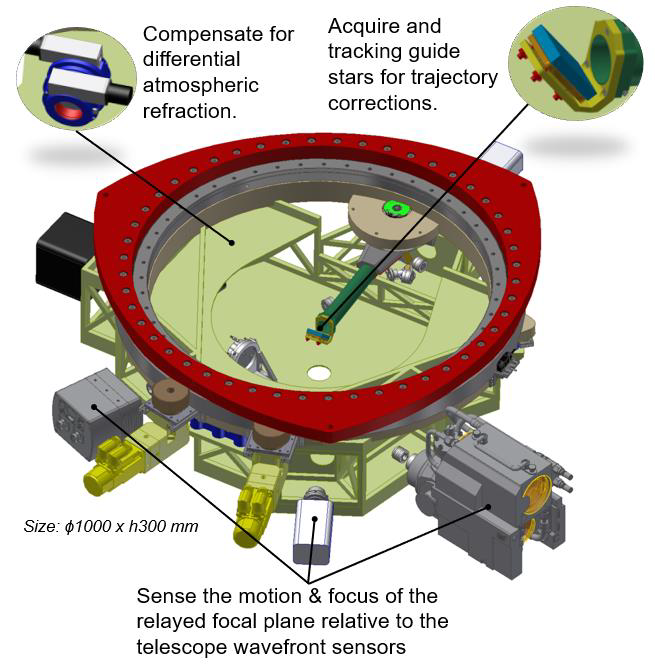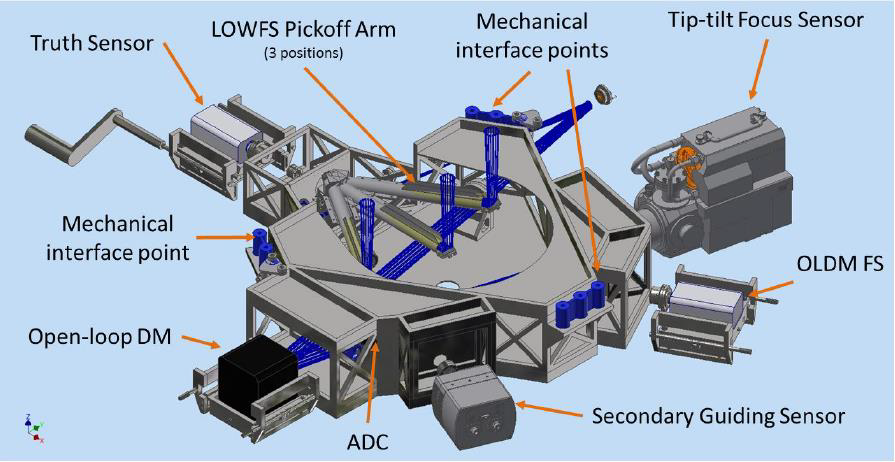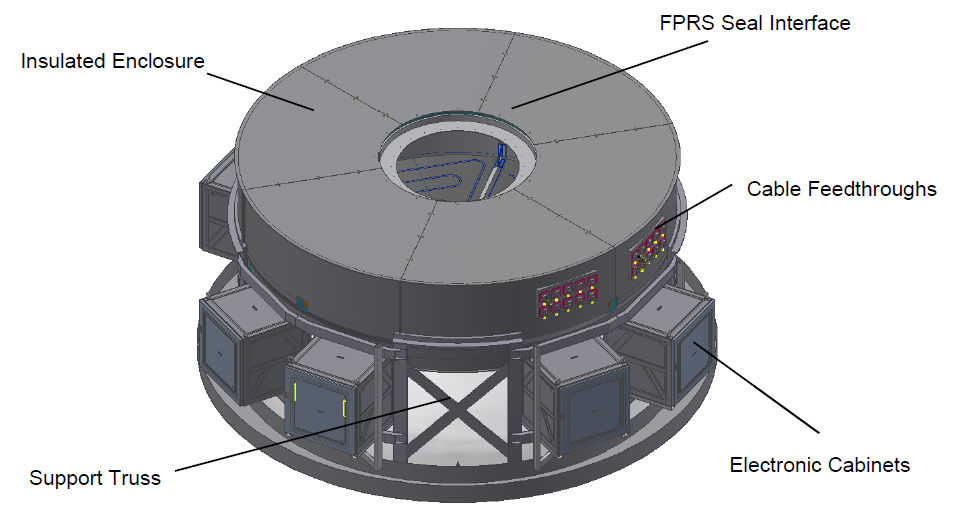Low Order Wave-Front Sensors (LOWFS)
Low Order Wavefront Sensors (LOWFS) Subsystem
The LOWFS subsystem provides natural guide star detection for HARMONI, enabling precise corrections in LTAO and NoAO modes. Its sensors and pick-off arm ensure accurate wavefront measurements and image stabilization across the instrument’s technical field.
The ‘Low Order Wave-Front Sensors’ subsystem is part of the NGSS (Natural Guide Star Sensors) system and is intended to provide natural guide star detection for the LTAO and NoAO modes of operation. It has 3 wavefront sensors, the SGS (Secondary Guiding Sensor) for NoAO, and TruthS (Truth Sensor) and TTFS (Tip-Tilt-Focus Sensor) for LTAO. All sensors receive the necessary light through a mirror mounted on a Pick-Off Arm (POA), which patrols the entire technical field of the 2 arcminute instrument.
In addition, the LOWFS occupies the lowest position in the NGSS system, closest to the focal plane, to minimise the physical size of the pick-up mirror.

Modules that form the subsystem:
1) Secondary Guiding Sensor (SGS)
A sensor used during the NoAO mode of operation to measure slow drifts (less than 0.1Hz) between the instrument’s focal plane and the telescope’s wavefront sensors. The SGS takes images of the 3 arcsecond field collected by the POA (Pick-Off Arm) of the LOWFS in a visible light camera.
Because the exposure times are 1 to 10 seconds and the camera works at wavelengths shorter than 950 nm, it is possible to provide a sky coverage of more than 99%.
The POA consists of two ‘theta-phi’ moving mechanisms, the first of which is a primary bearing driven by two stepper motors in an ‘anti-backlash’ configuration, while the secondary one implements a brushless motor directly to the arm’s axis of rotation (direct drive). The purpose of the POA is to patrol the technical field accurately (in the order of a few microns within the entire technical field) and to ensure image stabilisation. At the end of the arm is the ‘Pick-Off Mirror’, which is responsible for transmitting the light from the technical field to the detectors of the subsystem.


2) LTAO Sensors
LOWFS is responsible for providing the wavefront measurements of the natural guide stars to enable the LTAO mode of operation of the instrument. These sensors are the TTFS and TruthS.
In addition, the TTFS trajectory requires an atmospheric dispersion corrector (ADC) and an open-loop deformable mirror (OLDM) to improve the performance of the system in terms of sky coverage.

3) Internal Support Bench (ISB)
All components of the NGSS system (SCAOS, HCM and LOWFS subsystems) are coupled into a common support structure that keeps them stable with each other.
4) External Support and Enclosure (ESE)
Support structure for the NGSS system. This structure also provides a cooled thermal environment and support for the six outdoor electrical cabinets.

